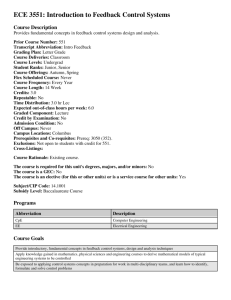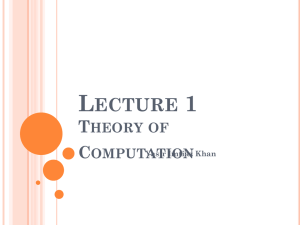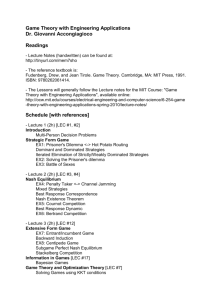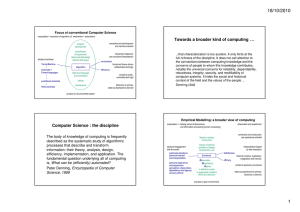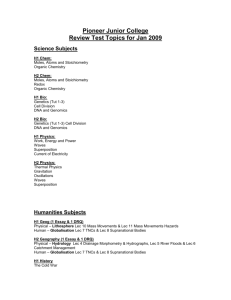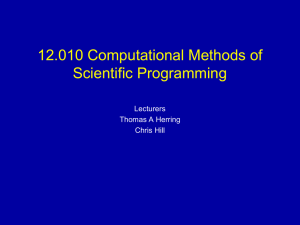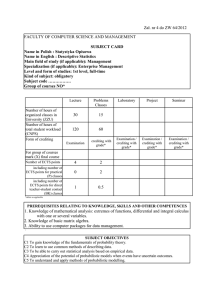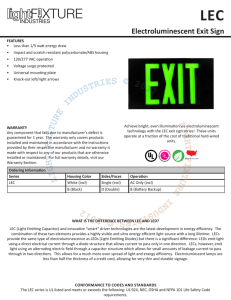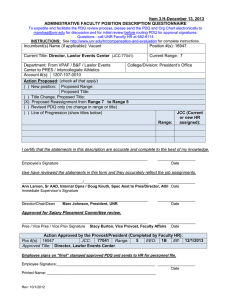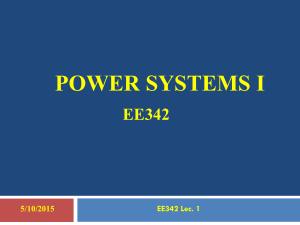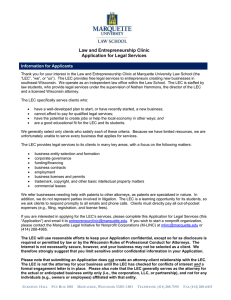Sets
advertisement
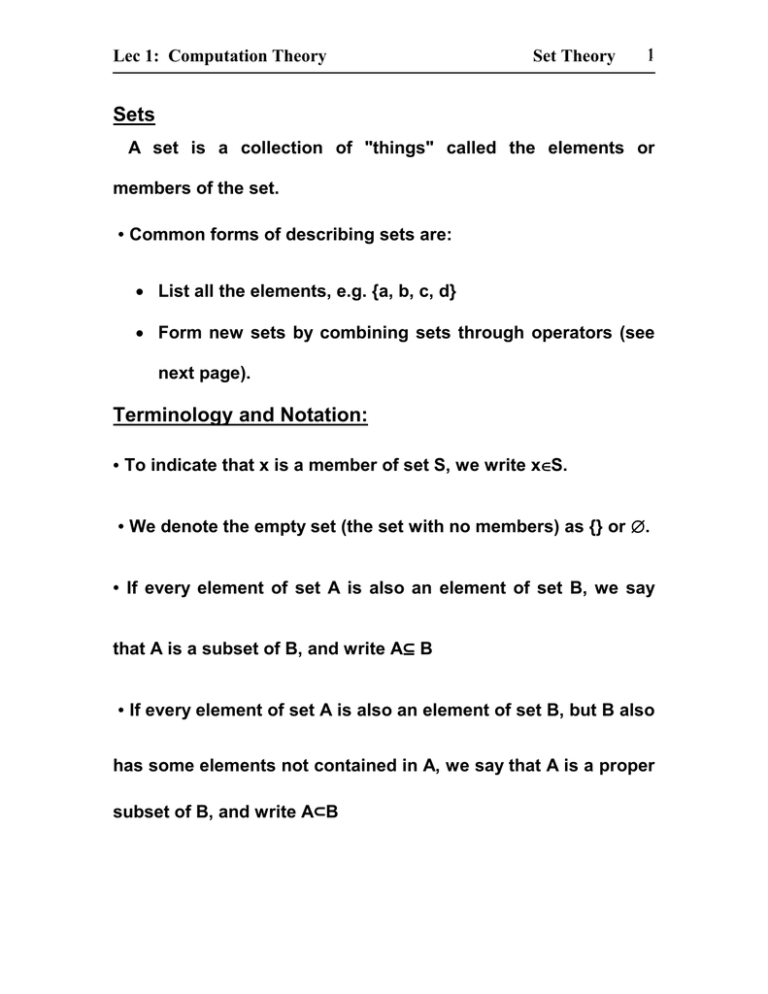
Lec 1: Computation Theory
Set Theory
1
Sets
A set is a collection of "things" called the elements or
members of the set.
• Common forms of describing sets are:
List all the elements, e.g. {a, b, c, d}
Form new sets by combining sets through operators (see
next page).
Terminology and Notation:
• To indicate that x is a member of set S, we write x∈S.
• We denote the empty set (the set with no members) as {} or ∅.
• If every element of set A is also an element of set B, we say
that A is a subset of B, and write A⊆ B
• If every element of set A is also an element of set B, but B also
has some elements not contained in A, we say that A is a proper
subset of B, and write A⊂B
Lec 1: Computation Theory
Set Theory
2
• We may also use the inverse notation: B⊇A and B⊃A for B is a
(proper) superset of A.
Note: It is essential to have a criterion for determining, for any
appropriate “thing”, whether it is or is not a member of the
given set. This is called the membership criterion.
Languages – which we will introduce later - are sets. These
sets contain specific strings over an alphabet, according to
certain specifications or conditions, which describe the
language. Grammars and automata can be used to
describe languages (and therefore also sets). Membership
criteria and appropriate decision algorithms are a central
topic in the study of formal languages.
Operations on Sets
The union of sets A and B, written
AB
is a set that contains everything that is in A, or in B, or in
both.
Lec 1: Computation Theory
Set Theory
3
The intersection of sets A and B, written
A∩B
is a set that contains exactly those elements that
are in both A and B.
The set difference of set A and set B, written
A–B
is a set that contains everything that is in A but not
in B.
The complement of a set A, written as -A or
A (A bar)
is the set containing everything that is not in A. We
assume for this definition some universal set U
that contains "everything" (meaning "everything
we are interested in at the moment"). Then
A = U - A.
ex: U={1,2,3,4,5,6} and A={3,5,6} then
A ={1,2,4}
The length of a set A, written |A|, is the number of elements
in a set A .ex: A={a,b,c,d} then length of A is 4
